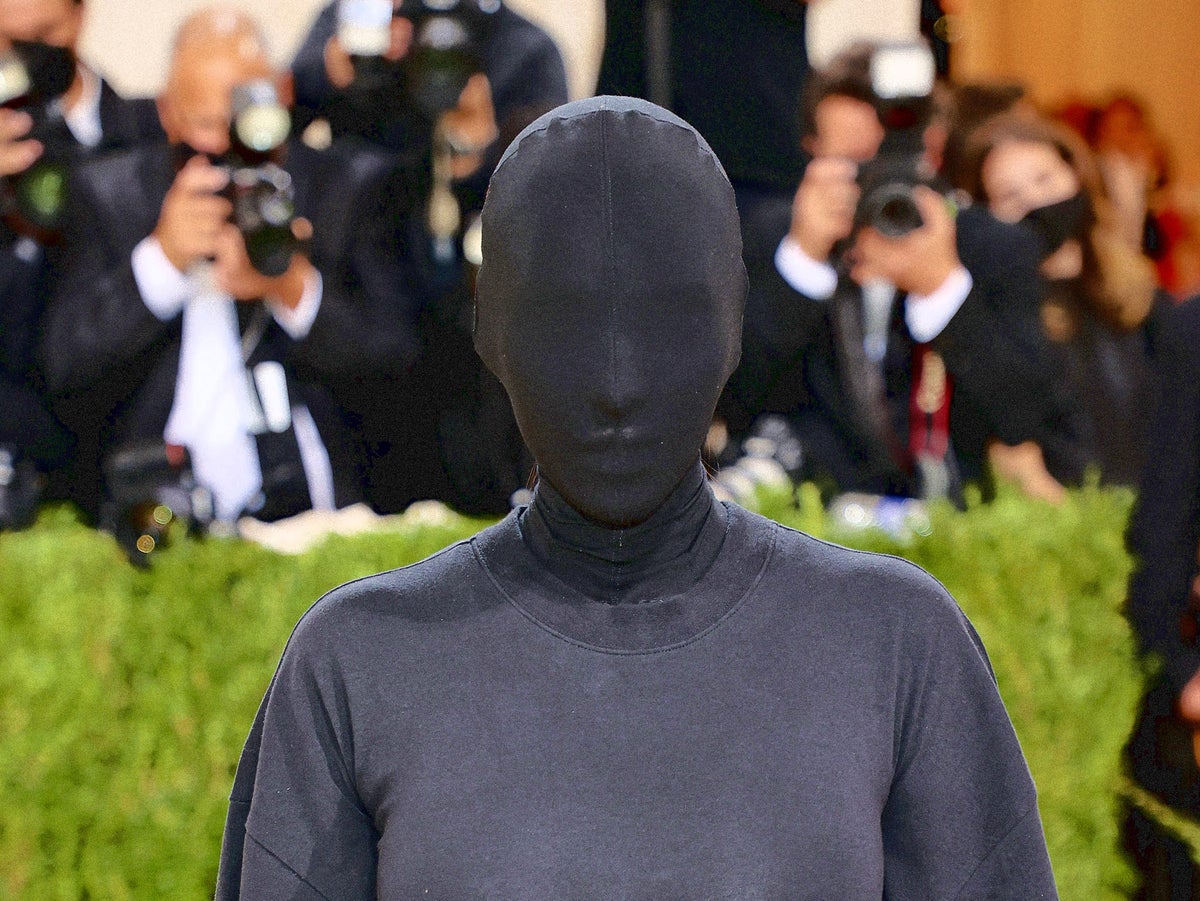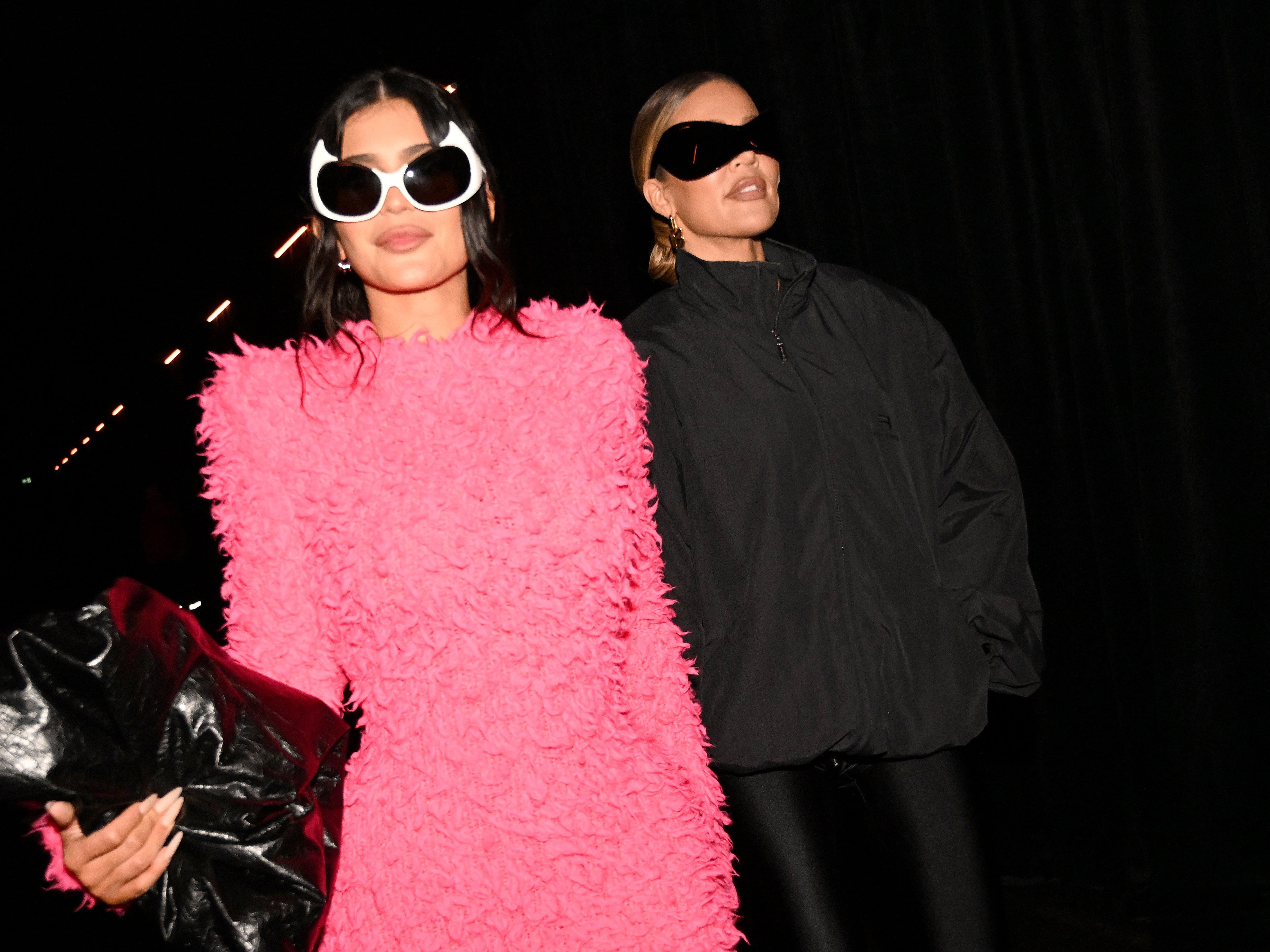
There are a lot of ways to sell a handbag. You could partner with a high-profile celebrity. Shoot a magazine campaign in the desert. Or, if you’re Balenciaga, you could dress it up in bondage gear and give it to a child. Last week, the luxury Spanish label released two photographs of child models holding the brand’s plush bear bags, which were fashioned to look like toys but seemed to be wearing leather harnesses and other BDSM apparel. They were promptly accused of sexually exploiting children. As if that wasn’t concerning enough, the brand’s website featured another questionable image from a separate campaign promoting its recent collaboration with Adidas. In it, a bag is positioned on top of a poorly disguised document from a US Supreme Court ruling related to indecent images of children.
A viral tweet shone a spotlight on both images, and the uproar began. People have called for a boycott. Some are burning their Balenciaga products. And the photographer behind the BDSM bear photos has issued a statement distancing himself from the brand. Celebrities are also taking action, with Bella Hadid appearing to have deleted photos of herself wearing the brand’s clothes on Instagram. Kim Kardashian, who has regularly worn Balenciaga looks in recent months, has also said she is “re-evaluating” her relationship with the brand. As for Balenciaga itself, the label has removed the campaign imagery and apologised, issuing a statement to say it strongly condemns child abuse and blaming the photos on a “series of grievous errors”.
All of this has been rightly condemned. But beyond the obvious criticism, there’s something deeper at play here that helps raise further questions around accountability and what actually drives consumer spending. Because, fundamentally, that’s the intention of these campaigns: to sell us things. Once you take away all of the noise and criticism, major brands almost always succeed in continuing to sell their products, backlash be damned.
Consider the fact that this is just the latest in a long line of major fashion brands embroiled in scandal. The most obvious example is Dolce & Gabbana, the Italian label that has found itself at the centre of several controversies over the years, spanning racism, homophobia and misogyny. There was the 2018 video of a Chinese model attempting to eat Italian food using chopsticks (they subsequently issued a video apologising to China). The body-shaming comments the brand’s co-founder, Stefano Gabbana, aimed at Selena Gomez. The trainers that had “thin and gorgeous” written on the side. And so on.
The point is that the brand survived. In August 2021, it hosted a series of extravagant shows featuring Jennifer Lopez, Doja Cat, and Diddy. It has since been worn on magazine covers by the likes of Kaia Gerber, Sarah Jessica Parker, Kate Hudson, and Jennifer Hudson. And in May, the label practically sponsored Kourtney Kardashian’s entire wedding. All of which has prompted people to ask, why can’t anyone cancel Dolce & Gabbana?
Turn your attention to other luxury brands and the answer might become clear. Gucci, for example, has faced countless scandals in recent years. In 2019, the label was accused of endorsing blackface after releasing an $890 (£740) polo neck top with large red lips. Gucci apologised and later outlined plans to “embed cultural diversity and awareness in the company”. Later that same year, the brand sent a series of white ensembles resembling straightjackets down the runway. One of its own models protested the theme, writing “mental health is not fashion” on her palms; the jackets were never sold in stores. It has also been accused of cultural appropriation for selling $790 (£657) turbans.
Gucci might have apologised for all of these incidents – and its revered creative director Alessandro Michele might have recently stepped down – but it continues to thrive, recently launching high-profile collaborations with Harry Styles and Adidas, and its clothes being regularly worn on red carpets and magazine covers. Earlier this year, Vogue France named Gucci the “most influential brand of 2022”.
And just in case you thought all this was reserved for European brands, take a look at Burberry, which faced opprobrium in 2019 for releasing a brown hoodie as part of its autumn/winter collection that had rope ties hanging from around its neck. “Suicide is not fashion,” wrote model Liz Kennedy, who took part in that season’s Burberry runway show.
Burberry removed the product from its collection and apologised, admitting that the design was “insensitive” and the brand had made a mistake. In January 2022, it predicted a 35 per cent rise in annual profits. Its most recent fashion shows have been championed by Bella Hadid, Naomi Campbell and Kate Moss.
But back to Balenciaga. The irony is that the brand is no stranger to controversy either, having been accused of everything from cultural appropriation to gentrifying sagging in the last year alone. In May, it was accused of glamorising poverty by releasing a pair of heavily distressed trainers for £1,290. A similar chain of events occurs after each one of these scandals: the brand is called out. It issues an apology. Then it either continues to thrive, or does something else it must apologise for. All of this begs one key question. If the fashion industry keeps neglecting to learn from their mistakes, at what point do they stop being mistakes entirely?
Given the scale of Balenciaga as a company, it seems odd to suggest, as it has, that those court documents were placed in the campaign photographs without their knowledge, or that it was a simple error that its plush bear bags were photographed with children. After all, this is a luxury brand owned by retail conglomerate Kering, which also owns Gucci alongside a roster of labels like Alexander McQueen, Saint Laurent, and Bottega Veneta. As such, its campaigns will likely need to go through the rigamarole of being signed off by a number of executives before being launched. There will have been meetings, approvals, and mock-ups. How likely is it that all of this made its way up the company’s ranks without one person asking to clarify the link between a designer handbag and documents on child abuse? The set designer on the Adidas shoot has already claimed, for instance, that representatives from Balenciaga were on set and “overseeing [the shoot], handling papers and other props”.
The thing is, in all of the aforementioned scandals, the brands involved often feign ignorance. They pass the buck, so to speak, claiming that something within its ranks must have gone severely wrong in order for this mistake to have happened. It’s no coincidence that Balenciaga has now filed a $25m (£20m) lawsuit against the production company behind the Adidas shoot. Nor is Kardashian’s ambivalent language in her own statement – she hasn’t ruled out working with them again, instead committing only to “re-evaluate” her relationship with them.
Sure, Balenciaga is now in a position where it’s facing the consequences of its actions. It has even wiped its entire Instagram feed of posts, except for the one featuring their official statement. But just how long this vow of silence lasts remains to be seen. Besides, are those going online to criticise the brand part of the very small demographic actually spending thousands of pounds on Balenciaga’s clothing? History would suggest that they are not – and even if they are, they don’t seem to care.

The truth is that we will never know what happened, or why “grievous errors” were made at Balenciaga or anywhere else. What we do know, though, is that the people running these fashion brands are no fools. Take one look at social media today and chances are you’ll stumble across talk about Balenciaga within minutes. Even people who know nothing about fashion will, in all likelihood, now be familiar with the brand.
Perhaps the reason why fashion keeps getting it wrong is because it wants to. In today’s social media-obsessed landscape, scandals are a way of maintaining cultural relevance. It starts a conversation. Whether it’s a positive or negative one doesn’t matter much. Because for better or worse, people are talking about you. In the case of Balenciaga, only time will tell whether this was a business-ending move, or the sign of a very successful marketing campaign.







